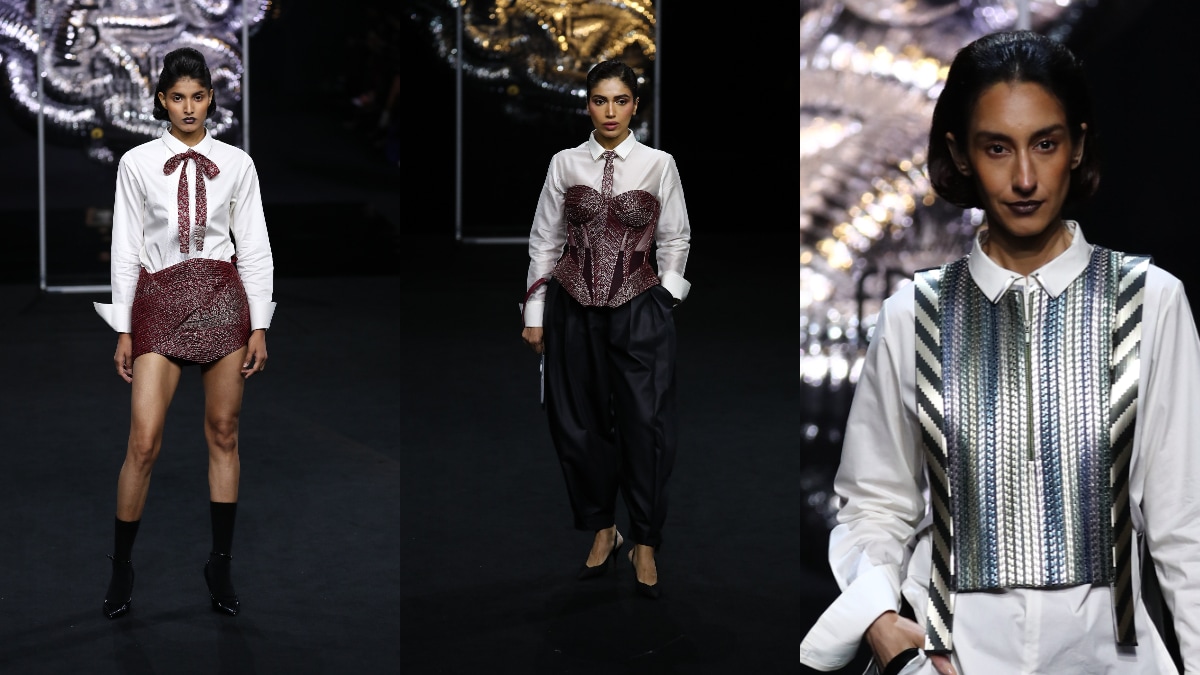Designer Amit Agarwal is known for his effortless creations. He is known for exploring the rich heritage of vintage Banarasi textiles and believes it to be an exciting journey. Banarasi weaving, with its intricate patterns and rich history, holds a special place in Indian craftsmanship.
In fact, he is one of the most brilliant designers of Lakmē Fashion Week x FDCI 2025. Edited excerpts from the interview: Tell us about your collection at the LFW this year. This collection is all about redefining the future of ready-to-wear, where modern fashion meets timeless heritage through innovative experiments in form and texture.

Continuing our focus on effortless dressing, this collection centers on versatility—pieces that are easy to wear yet full of personality. With structured yet fluid silhouettes, layering-friendly designs, and bold details, each item is made to be mixed and matched. It’s a celebration of fashion and function, seamlessly coming together to create wardrobe essentials that make a statement and can be styled in countless ways.
You have been doing a lot of work on Benarasi . Tell us a little about that. Yes, we have been deeply exploring the rich heritage of vintage Banarsi textiles, and it’s been a truly exciting journey.
Banarsi weaving , with its intricate patterns and rich history, holds a special place in Indian craftsmanship. But my approach has been about modernizing this craft while respecting its traditional roots. I’ve been experimenting with the timeless beauty of Banarsi fabric, incorporating it into contemporary silhouettes that are both wearable and relevant to today’s fashion landscape.
It’s about bringing together the past and present in a way that resonates with today’s global fashion sensibilities. What is your perspective on India as a land of textiles, and how do you contribute to promoting it? India is a land of incredible textile diversity, and I feel truly fortunate to be part of its vibrant legacy. From the intricate textiles of Varanasi to the rich silks and the diverse prints of Rajasthan, the country’s textile heritage is unparalleled.
What makes it even more fascinating is the deep connection between textiles and culture—they carry stories, traditions, and skills passed down through generations. I see India’s textiles as both a treasure trove and an endless source of inspiration. For me, promoting this rich heritage means not only preserving traditional techniques but also reimagining them for the modern world.
What is your take on the revival of weaves? Reviving traditional weaves is more than a trend; it’s a cultural and artistic revival. By blending these ancient techniques with modern fashion, we honor our heritage and the artisans behind these crafts. This approach preserves traditional skills, introduces them to a global audience, and creates a dialogue between tradition and contemporary aesthetics.
How local are we getting when it comes to fashion? Fashion is becoming increasingly localized, with a deep appreciation for indigenous craftsmanship and materials. Designers are exploring regional techniques and histories to create pieces that are both authentic and globally appealing. This shift supports our local artisanal families and also minimizes the environmental impact of production.
It’s a harmonious blend of local heritage with a global vision, ensuring that each creation is unique and carries a piece of cultural history. What do you have to say about the business of fashion? Has it gotten any better? The business of fashion has definitely evolved over the years, and it’s a complex landscape to navigate—both exciting and challenging at the same time. There’s been a significant shift in how fashion is consumed, marketed, and understood.
With the rise of e-commerce, social media, and global connectivity, the fashion industry has become much more accessible. But, in many ways, this has also led to a hyper-competitive environment where trends shift quickly and consumer demands change just as fast. Your take on conscious consumption.
.. Conscious consumption is something I feel deeply about, especially in today’s world, where the fashion industry has been both a catalyst for creativity and a contributor to overconsumption.
For me, conscious consumption starts with the understanding that fashion isn’t just about filling our wardrobes with the latest trends. It’s about investing in quality pieces that last, pieces that have a story behind them, pieces that are crafted with care and respect for the environment and the artisans who make them. It’s not about depriving ourselves of fashion, but rather about choosing thoughtfully, whether that means opting for sustainable fabrics, supporting local artisans, or choosing items that are timeless in both design and craftsmanship.
Fashion vs Style, What’s your preference, and how is it different? Style is paramount. While fashion is ever-changing, style is personal and enduring. Fashion reflects trends, but style is about individual expression and authenticity.
Our designs blend these concepts, offering pieces that are both trend-forward and timeless, allowing wearers to showcase their unique style while staying fashionable. Your favourite style icon from Bollywood and Hollywood? And how would you like to dress them up? When it comes to style icons, there are quite a few from across the world who I admire for their individualistic approach to fashion and their ability to break boundaries while staying true to themselves. These personalities represent a mix of sophistication, strength, and boldness in their style, and I would love to bring out these qualities through designs that celebrate both heritage and innovation.
.
Entertainment

FASHION POLICE | EXCLUSIVE! Designer Amit Agarwal on the revival of weaves and his collection at Lakmē Fashion Week x FDCI 2025

In an EXCLUSIVE interview with Firstpost’s Lachmi Deb Roy, Amit Agarwal talks about his collection at the Lakmē Fashion Week x FDCI 2025, revival of weaves, fashion Vs style and more. Gorgeous fabrics and refined simplicity has always been his style.














